by bria4123 on December 28, 2012
The Roman Forum and Emperor’s Palace (rising behind the 3 columns of the Temple of Castor and Pollux in the photo) still have enough glory to impress us digital age travelers.
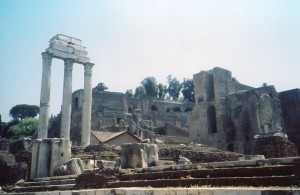
But the buildings around the Forum and the Palatine Hill were humble between Rome’s beginnings in the 8th century BCE and the 1st century BCE, when Julius Caesar began to build big. But even greater glory emerged from the plain brick buildings during Rome’s long developmental period. This glory made the Western tradition different from China’s. [click to continue…]
by bria4123 on December 26, 2012
By 1CE, Rome and China’s Han Dynasty built the largest empires the world had ever seen. Since they presided over opposite ends of the Eurasian super-continent at the same time, they make a cool intercultural comparison.
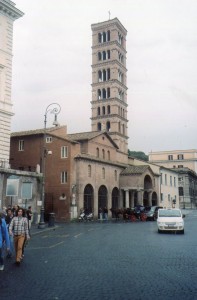
The Church of Santa Maria in Cosmedin (above) rises from very deep foundations. Much of ancient Rome’s earliest civic life was centered in its neighborhood. What people have found from Rome’s earliest days says a lot about origins of Western Culture. [click to continue…]
by bria4123 on December 25, 2012
In the late 8th century BCE, Greek ceramics already expressed Western ways of seeing reality.
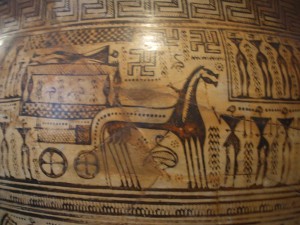
It’s different from art and perceptions which had developed in China.
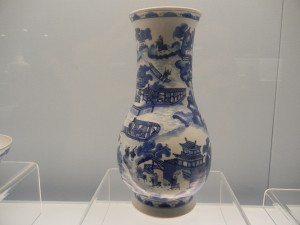
All the scenes on the Chinese vase flow together within a single unified field. But the figures on the Greek vase are distinct, and abstract lines dominate the surface. How did these 2 views of the world emerge? [click to continue…]
by bria4123 on December 25, 2012
The big boys in early Athens were having a grand old time. But ancient Athens wasn’t ancient China.

Changes were brewing as more people wanted to live comfortably, like the guy in the 5th century BCE bowl in the above photo. Things happened just after 600 BCE to keep Athens on a path which made Western Civ distinct. [click to continue…]
by bria4123 on December 24, 2012
Ancient Athens’ democracy had roots in its earlier aristocracy.
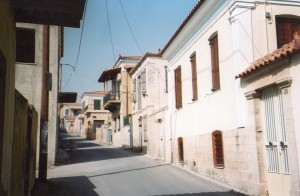
Life in early Athens formed ways of thinking that encouraged democracy to develop. [click to continue…]
by bria4123 on December 24, 2012
Ancient Greece began to colonize the eastern Mediterranean in the 8th century BCE–just after it emerged from its dark ages. This movement had a lot to do with shaping thought in Western civ–we owe a lot to those brave people who loaded their worldly goods onto ships and headed out to sea.
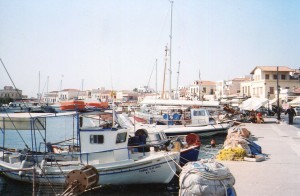
So we’ll honor them by getting on board and exploring their world. [click to continue…]
by bria4123 on December 22, 2012
Ancient China and ancient Greece and Rome are natural contrasts. Their lands are very different.
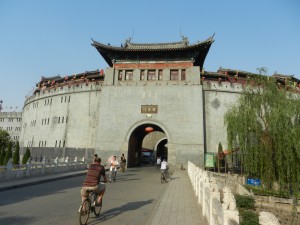
The thought patterns and art forms from both regions reflect experiences of living in different environments, and they have continuity that goes back thousands of years before both regions developed literature to express their thoughts to future folks. So we’ll dig into some of China’s deepest roots here. [click to continue…]
by bria4123 on December 21, 2012
One thousand years before the Shang Dyansty’s capital, Zhengzhou, was bustling, the ancient Egyptians built the pyramids and the Sphinx at Giza.
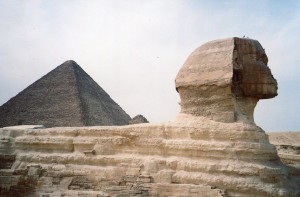
These monuments are so beautiful and magnificent that all of nature’s power, and all of the ties that order society, seem concentrated in them.
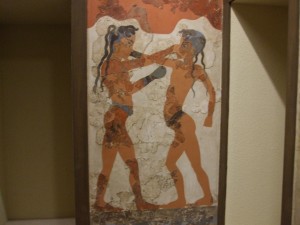
When the Shang Dynasty reigned from Zhengzhou 3,500 years ago, the Minoans on Crete and their colonies (the dudes giving each other nose jobs are from Thera) painted realistic images of people and animals. Both of these civs developed art that keeps the perspective focused on individual objects that stand out from their surroundings. The existence of the object, its basic forms and its beauty have been some of the most key ideas in Western thought ever since. It’s real cool that these ideas were emerging so long ago, and that they still shape our ideas of what truth is.
But China developed different ways of thinking and perceiving which are just as ancient and current. The Shang Dynasty did a lot to advance Chinese thought patterns. Come in and explore–nobody will punch you in the nose, but I can’t guarantee that the dragons will stay away. [click to continue…]
by bria4123 on December 19, 2012
Here’s a shot of a reconstructed portion of the Shang Dynasty city walls of Zhengzhou. This is what the area around a gate might have looked like.
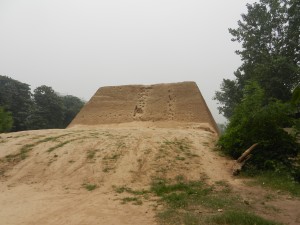
11 openings have been found in Zhengzhou’s Shang Dynasty walls. People lugged goods from these gates to many surrounding states. Zhengzhou’s artisans were developing key trends in perspective, and their works spread through much of what became modern China. So we’ll explore some of Chinese culture’s ancient roots. [click to continue…]
by bria4123 on December 18, 2012
One of the best history buzzes I got during my recent trip through China was walking on the ancient walls of the great Shang capital Zhengzhou.
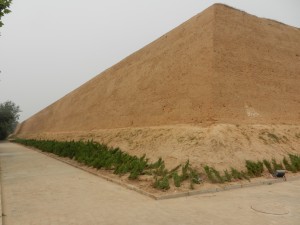
The wall in this pic’s actually a reconstruction. I’ll give you views of the ancient remains in this post too, but this shot shows you the grandeur of this more than 3,500 year old city during its green years. For a while, I got to commune with the ancient Shang emperors. Come inside and hear what their spirits told me. [click to continue…]












